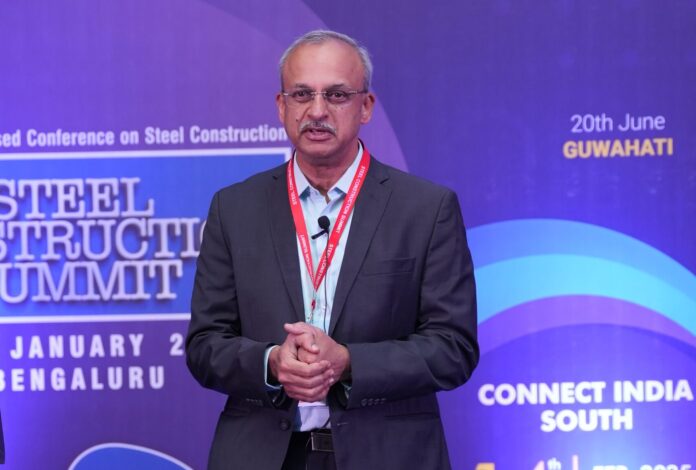You started your career in the early 1990s and have worked on diverse projects globally. Could you share some key milestones and what inspired you to pursue a career in infrastructure and construction?
It is a general interest in life and a fascination with the earth and the environment we live in that inspired me to pursue a career in infrastructure and construction. Whatever inspires me, whether it’s astronomy, botany, biology, nature, or even computers, somehow finds its way back into the work I do.
For example, if I need to explore nature-based engineering solutions for construction or integrate computers and technology into the field, why not delve into artificial intelligence and see how it connects to infrastructure? I always try to relate my interests back to my profession, creating interactions and collaborations across multiple disciplines, everything ultimately ties back into construction.
That is the motivation and driving spirit behind what I do. It is difficult to quantify specific milestones in my career because I believe every project I have undertaken has been a milestone in its own way. From working on groundbreaking projects in New York and New Jersey to technology-driven initiatives in India, such as precast construction and rapid-strength concrete, each experience has shaped my journey.
I have had the opportunity to work with a variety of technologies and even gain exposure to challenging environments. Every step has contributed to my growth, and in that sense, my career is a continuous series of milestones.
Among your projects, which one do you consider the most challenging and why? How did you overcome those challenges?
It’s about creating a challenge for yourself, taking a project and turning it into an opportunity to push the boundaries of engineering. I think that’s a much better approach moving forward.
For example, in a project I worked on in Armenia, they had just experienced an earthquake and were trying to retrofit a state-of-the-art hotel in the city centre. Seismic retrofitting was a significant challenge. Ensuring that the available materials met international standards and successfully completing the project in a landlocked country was a major accomplishment.
Currently, the work I am involved in presents another challenge, where the entire spectrum of engineering is visible. In civil engineering, everything from foundation work and bulk earthworks to bridges and buildings must be considered. The thought process shifts dramatically from small-scale structures to large-scale terminal buildings. Addressing all these aspects, from the smallest details to massive infrastructure projects, is what makes the work truly engaging.
I believe every project should be approached as a challenge. The question I always ask is: ‘Can I take this on? Can I transform it? Can I deliver it?’ Rather than defining my career by specific challenges, I view it as a continuous process of accepting and overcoming them.
How do you manage the complexities of coordinating with multiple stakeholders in large-scale infrastructure projects?
For any large-scale infrastructure project, a well-defined project execution plan is essential. We break down the project into manageable, bite-sized chunks, making it easier to handle and execute. This involves creating a clear strategy for design, procurement, and execution while ensuring that each phase is systematically planned.
Most importantly, effective communication with multiple stakeholders is crucial. Communication is so essential that once everything is clearly conveyed, the work starts happening almost automatically. It no longer depends on a single individual but becomes a collaborative effort.
Providing a collaborative platform is equally important. With internet-based and cloud-based systems, team members can access information from anywhere; at home, at work, or on the go. This access, combined with strong communication, plays a key role in successfully delivering large-scale infrastructure projects.
In your opinion, what are the key barriers to adopting sustainable practices in the Indian infrastructure sector, and how can they be overcome?
Sometimes, the biggest barrier to sustainability is the perception that introducing additional sustainable efforts will incur extra costs. People often weigh economic benefits against sustainability benefits, seeing them as opposing forces.
However, we need to change this mindset and recognise that sustainability can also be economically beneficial. It depends on how we evaluate the economy – are we focusing only on short-term gains, or are we considering long-term benefits? When viewed over the entire project lifecycle, the economic advantages of sustainable efforts will far outweigh the initial capital or incremental costs.
This shift in thought process is the key barrier to implementing sustainable practices. However, with better communication, education, and awareness, this barrier can be easily overcome.
India is witnessing a surge in infrastructure development. How can the steel industry better align with the needs of large-scale infrastructure projects?
The kind of infrastructure projects we undertake require a significant amount of steel. However, we are noticing a gap between India’s manufacturing and production capacity and the scale of demand we are looking to meet.
When dealing with large-scale structures, the steel sections that are regularly produced in India are often not sufficient. We need customised, heavy-duty sections, and quite often, we end up importing them rather than sourcing them domestically.
To address this, we are now changing our approach. Instead of relying solely on what is available, we are proactively reaching out to vendors in a more collaborative, partnership-driven manner. We engage with them well in advance, asking if they can produce specific sections, accommodate the required capacity, and deliver, for example, a certain tonnage within three, five, or six months. This kind of dialogue allows us to plan ahead and ensure supply meets our project timelines.
Planning is critical in executing such large-scale infrastructure projects. When we look at international benchmarks and compare them with what is required here, our goal is to ensure that projects like Bangalore International Airport not only meet but exceed global standards.
Having worked on international projects, how does the Indian steel industry compare to global benchmarks in terms of innovation, sustainability, and efficiency?
When it comes to innovation and expertise, I believe India is on par with global standards. However, the challenge lies in improving efficiency and raising the bar in terms of quality, safety, and tolerances. This is where we see a gap that needs to be addressed.
With a bit more effort, we can bridge this gap, enhance efficiency, and even surpass international standards. Technology remains a key driver of change in the infrastructure sector.
What specific technologies do you believe will have the most transformative impact in the next decade?
From a technology perspective, at Bangalore International Airport, we are making a significant push toward sustainability. We are actively experimenting with composite structures and increasing the recycling and reuse of materials. These will be the real game changers as we move forward.
Additionally, the integration of artificial intelligence in facility maintenance will revolutionise how we troubleshoot and anticipate potential downtimes, ultimately helping to prevent disruptions. These three or four key aspects will be the major technology drivers shaping the future.
So far, we have completed only the first phase of Terminal 2 (T2). We are already in the design stage for Phase 2, and over the next three to four years, T2 will double in size. There is an ambitious expansion plan in place.
Beyond T2, several other infrastructure projects are underway. We are developing a tunnel and an elevated taxiway that will span the main roads, including the Boulevard. These projects will require a significant amount of steel for the construction of elevated structures and tunnels. Looking ahead, the next five years will be even busier than the past five, with extensive developments and expansion efforts underway.




